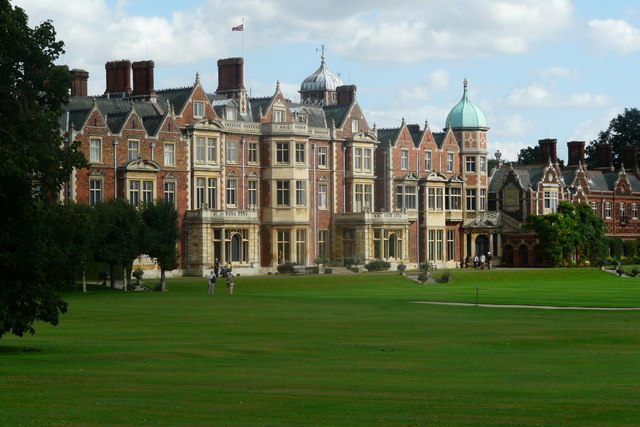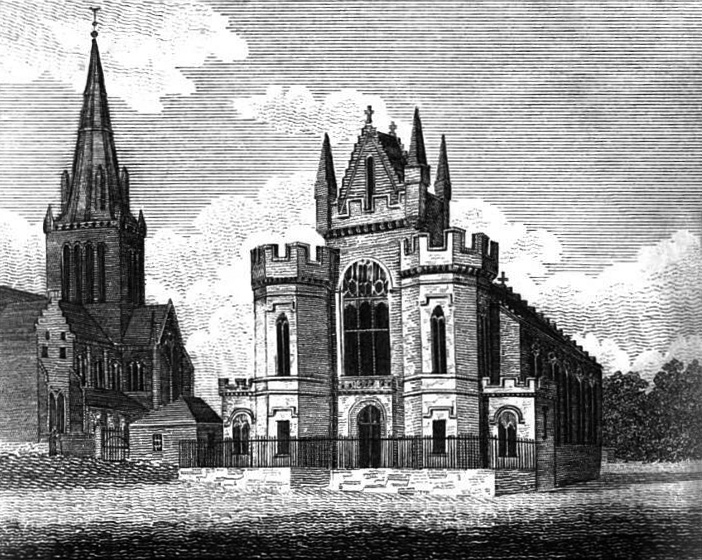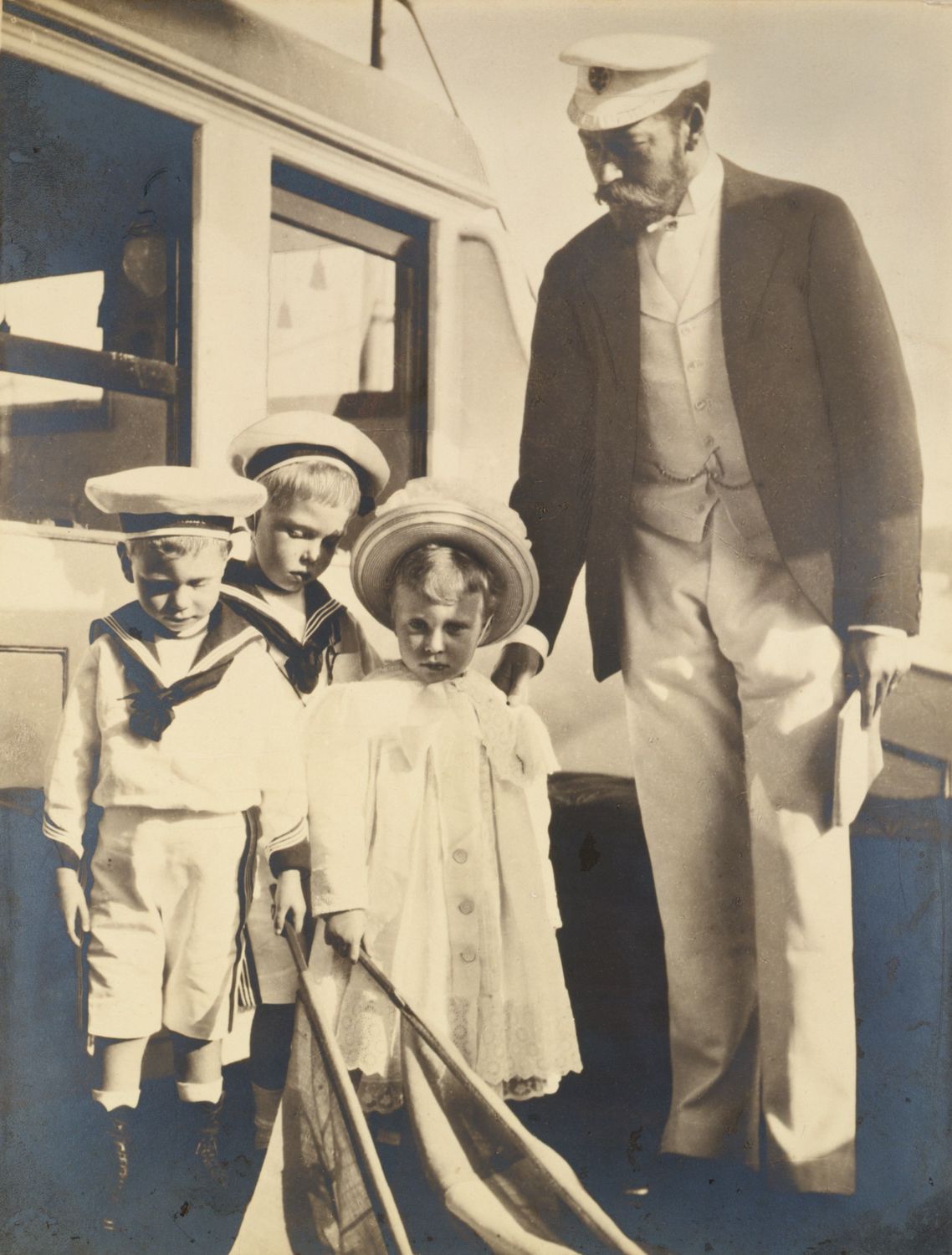|
Death And State Funeral Of George V
The state funeral of George V, King of the United Kingdom of Great Britain and Ireland and Emperor of India, occurred on 28 January 1936 at St George's Chapel, Windsor Castle, following his death on 20 January and subsequent lying in state at Westminster Hall. Death King George had suffered several bouts of serious illness since the First World War; he suffered from chronic bronchitis exacerbated by heavy smoking. By 1935 he required the occasional use of oxygen tanks kept at his bedside. By the end of that year, his personal physician, Lord Dawson of Penn, told the prime minister, Stanley Baldwin, that the king was "packing up his luggage and getting ready to depart". In the new year of 1936, King George took to his bed at Sandringham House in Norfolk; family members were summoned on 16 and 17 January by an anxious Queen Mary. At 21:25 on Tuesday 20 January, Lord Dawson wrote a press bulletin on the back of a menu card; "the King’s life is moving peacefully to its close ... [...More Info...] [...Related Items...] OR: [Wikipedia] [Google] [Baidu] |
Cosmo Lang
William Cosmo Gordon Lang, 1st Baron Lang of Lambeth, (31 October 1864 – 5 December 1945) was a Scottish Anglican prelate who served as Archbishop of York (1908–1928) and Archbishop of Canterbury (1928–1942). His elevation to Archbishop of York, within 18 years of his ordination, was the most rapid in modern Church of England history. As Archbishop of Canterbury during the abdication crisis of 1936, he took a strong moral stance, his comments in a subsequent broadcast being widely condemned as uncharitable towards the departed king. The son of a Scots Presbyterian minister, Lang abandoned the prospect of a legal and political career to train for the Anglican priesthood. Beginning in 1890, his early ministry was served in slum parishes in Leeds and Portsmouth, except for brief service as Vicar of the University Church of St Mary the Virgin in Oxford. In 1901 he was appointed suffragan Bishop of Stepney in London, where he continued his work among the poor. He also se ... [...More Info...] [...Related Items...] OR: [Wikipedia] [Google] [Baidu] |
Gun Carriage
A gun carriage is a frame and mount that supports the gun barrel of an artillery piece, allowing it to be maneuvered and fired. These platforms often had wheels so that the artillery pieces could be moved more easily. Gun carriages are also used on ships to facilitate the movement and aiming of large cannons. Early guns The earliest guns were laid directly onto the ground, with earth being piled up under the muzzle end of the barrel to increase the elevation. As the size of guns increased, they began to be attached to heavy wooden frames or beds that were held down by stakes. These began to be replaced by wheeled carriages in the early 16th century. Smoothbore gun carriages From the 16th to the mid-19th century, the main form of artillery remained the smoothbore cannon. By this time, the trunnion (a short axle protruding from either side of the gun barrel) had been developed, with the result that the barrel could be held in two recesses in the carriage and secured with an ... [...More Info...] [...Related Items...] OR: [Wikipedia] [Google] [Baidu] |
London King's Cross Railway Station
King's Cross railway station, also known as London King's Cross, is a passenger railway terminus in the London Borough of Camden, on the edge of Central London. It is in the London station group, one of the busiest stations in the United Kingdom and the southern terminus of the East Coast Main Line to North East England and Scotland. Adjacent to King's Cross station is St Pancras International, the London terminus for Eurostar services to continental Europe. Beneath both main line stations is King's Cross St Pancras tube station on the London Underground; combined they form one of the country's largest and busiest transport hubs. The station was opened in Kings Cross in 1852 by the Great Northern Railway on the northern edge of Central London to accommodate the East Coast Main Line. It quickly grew to cater for suburban lines and was expanded several times in the 19th century. It came under the ownership of the London and North Eastern Railway as part of the Big Four gr ... [...More Info...] [...Related Items...] OR: [Wikipedia] [Google] [Baidu] |
LNER Class B17
The London and North Eastern Railway (LNER) Class B17, also known as "Sandringham" or "Footballer" class was a class of 4-6-0 steam locomotive designed by Nigel Gresley for hauling passenger services on the Great Eastern Main Line. In total 73 were built. Background By 1926, the former GER B12 class locomotives were no longer able to cope with the heaviest express passenger trains on the Great Eastern Main Line between London and Cambridge, Ipswich and Norwich. Yet Gresley was unable to use his larger classes due to severe weight restrictions on the line. The requirement for a lightweight yet powerful 4-6-0 proved to be difficult to achieve. Design After several unsuccessful attempts by Doncaster Works to satisfy Gresley's specification, the contract for the detailed design and building of the class was given to the North British Locomotive Company in 1927. They used several features from a batch of A1 Pacifics they had built in 1924. The cab, cylinders, and motion had all ... [...More Info...] [...Related Items...] OR: [Wikipedia] [Google] [Baidu] |
Funeral Train
A funeral train carries a coffin or coffins (caskets) to a place of interment by railway. Funeral trains today are often reserved for leaders, national heroes, or government officials, as part of a state funeral, but in the past were sometimes the chief means of transporting coffins and mourners to graveyards. Many modern era funeral trains are hauled by operationally restored steam locomotives, due to the more romantic image of the steam train against more modern diesel or electric locomotives, however non-steam powered funeral trains have been used. History The first funeral train was run by The London Necropolis and National Mausoleum Company on 7 November 1854. Trains ran once a day from London Necropolis railway station to Brookwood Cemetery. The train carried not only the bodies of the dead, but the parties of mourners who had come to attend the funeral services. Different classes were available for both the living and the dead; a more expensive first class ticket wo ... [...More Info...] [...Related Items...] OR: [Wikipedia] [Google] [Baidu] |
Edward VIII
Edward VIII (Edward Albert Christian George Andrew Patrick David; 23 June 1894 – 28 May 1972), later known as the Duke of Windsor, was King of the United Kingdom and the Dominions of the British Empire and Emperor of India from 20 January 1936 until his abdication in December of the same year. Edward was born during the reign of his great-grandmother Queen Victoria as the eldest child of the Duke and Duchess of York, later King George V and Queen Mary. He was created Prince of Wales on his 16th birthday, seven weeks after his father succeeded as king. As a young man, Edward served in the British Army during the First World War and undertook several overseas tours on behalf of his father. While Prince of Wales, he engaged in a series of sexual affairs that worried both his father and then-British prime minister Stanley Baldwin. Upon his father's death in 1936, Edward became the second monarch of the House of Windsor. The new king showed impatience with court protocol, an ... [...More Info...] [...Related Items...] OR: [Wikipedia] [Google] [Baidu] |
Wolferton Railway Station
Wolferton was a railway station on the Lynn and Hunstanton Railway line which opened in 1862 to serve the village of Wolferton in Norfolk, England. The station was also well known as the nearest station to Sandringham House, and royal trains brought the royal family to and from their estate until the station's closure in 1969. After spending some time as a museum, the station is now preserved in private hands. The signal box and part of the station are listed buildings, Grade II*. History In February 1862, a large estate was purchased in Sandringham as a private residence for the young Prince of Wales. The eventual residence, Sandringham House, was only from the site of the Lynn & Hunstanton Railway's projected Wolferton railway station, and the directors much welcomed this unexpected development. The royal patronage of the station prompted its reconstruction in 1898 when extensive Tudor-style platform buildings were constructed at a cost of £8,132, including the ... [...More Info...] [...Related Items...] OR: [Wikipedia] [Google] [Baidu] |
St Mary Magdalene Church, Sandringham
St Mary Magdalene Church is a church in Sandringham, Norfolk, England, located just to the southwest of Sandringham House. Members of the British Royal Family attend services when in residence at Sandringham, which normally includes Christmas. The church is dedicated to Mary Magdalene, a disciple of Jesus and the current rector is the Reverend Canon Paul Williams. History The Grade II* listed church is dedicated to Mary Magdalene and is described as a small building in the Perpendicular style, "nobly lying on raised ground". The current building dates to the 16th century and was restored by S. S. Teulon in 1855 and Arthur Blomfield in 1890. It is considered to be a noteworthy example of a carrstone building. It is located in the park and is approached from Sandringham House through the garden by "an avenue of fine old Scotch firs". Much of the decoration and the church's stained glass in the east window was created by Charles Eamer Kempe whom King Edward VII ... [...More Info...] [...Related Items...] OR: [Wikipedia] [Google] [Baidu] |
Church Of England Parish Church
A parish church in the Church of England is the church which acts as the religious centre for the people within each Church of England parish (the smallest and most basic Church of England administrative unit; since the 19th century sometimes called the ecclesiastical parish, to avoid confusion with the civil parish which many towns and villages have). Parishes in England In England, there are parish churches for both the Church of England and the Roman Catholic Church. References to a "parish church", without mention of a denomination, will, however, usually be to those of the Church of England due to its status as the Established Church. This is generally true also for Wales, although the Church in Wales is dis-established. The Church of England is made up of parishes, each one forming part of a diocese. Almost every part of England is within both a parish and a diocese (there are very few non-parochial areas and some parishes not in dioceses). These ecclesiastical parishes ... [...More Info...] [...Related Items...] OR: [Wikipedia] [Google] [Baidu] |
The Church Of St Mary Magdalen - Geograph
''The'' () is a grammatical article in English, denoting persons or things that are already or about to be mentioned, under discussion, implied or otherwise presumed familiar to listeners, readers, or speakers. It is the definite article in English. ''The'' is the most frequently used word in the English language; studies and analyses of texts have found it to account for seven percent of all printed English-language words. It is derived from gendered articles in Old English which combined in Middle English and now has a single form used with nouns of any gender. The word can be used with both singular and plural nouns, and with a noun that starts with any letter. This is different from many other languages, which have different forms of the definite article for different genders or numbers. Pronunciation In most dialects, "the" is pronounced as (with the voiced dental fricative followed by a schwa) when followed by a consonant sound, and as (homophone of the archaic pr ... [...More Info...] [...Related Items...] OR: [Wikipedia] [Google] [Baidu] |
Broadsheet Newspaper
A broadsheet is the largest newspaper format and is characterized by long vertical pages, typically of . Other common newspaper formats include the smaller Berliner and tabloid–compact formats. Description Many broadsheets measure roughly per full broadsheet spread, twice the size of a standard tabloid. Australian and New Zealand broadsheets always have a paper size of A1 per spread (). South African broadsheet newspapers have a double-page spread sheet size of (single-page live print area of 380 x 545 mm). Others measure 22 in (560 mm) vertically. In the United States, the traditional dimensions for the front page half of a broadsheet are wide by long. However, in efforts to save newsprint costs, many U.S. newspapers have downsized to wide by long for a folded page. Many rate cards and specification cards refer to the "broadsheet size" with dimensions representing the front page "half of a broadsheet" size, rather than the full, unfolded broadsheet sprea ... [...More Info...] [...Related Items...] OR: [Wikipedia] [Google] [Baidu] |






.jpg)


.png)